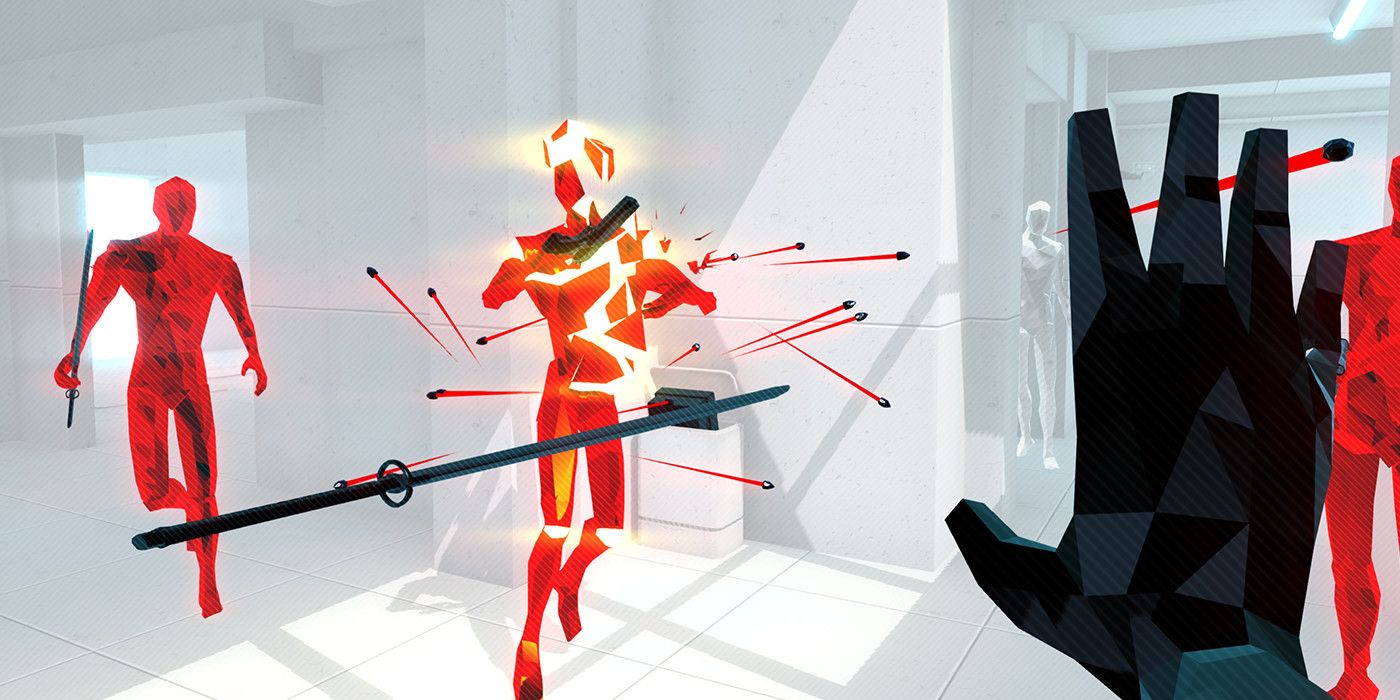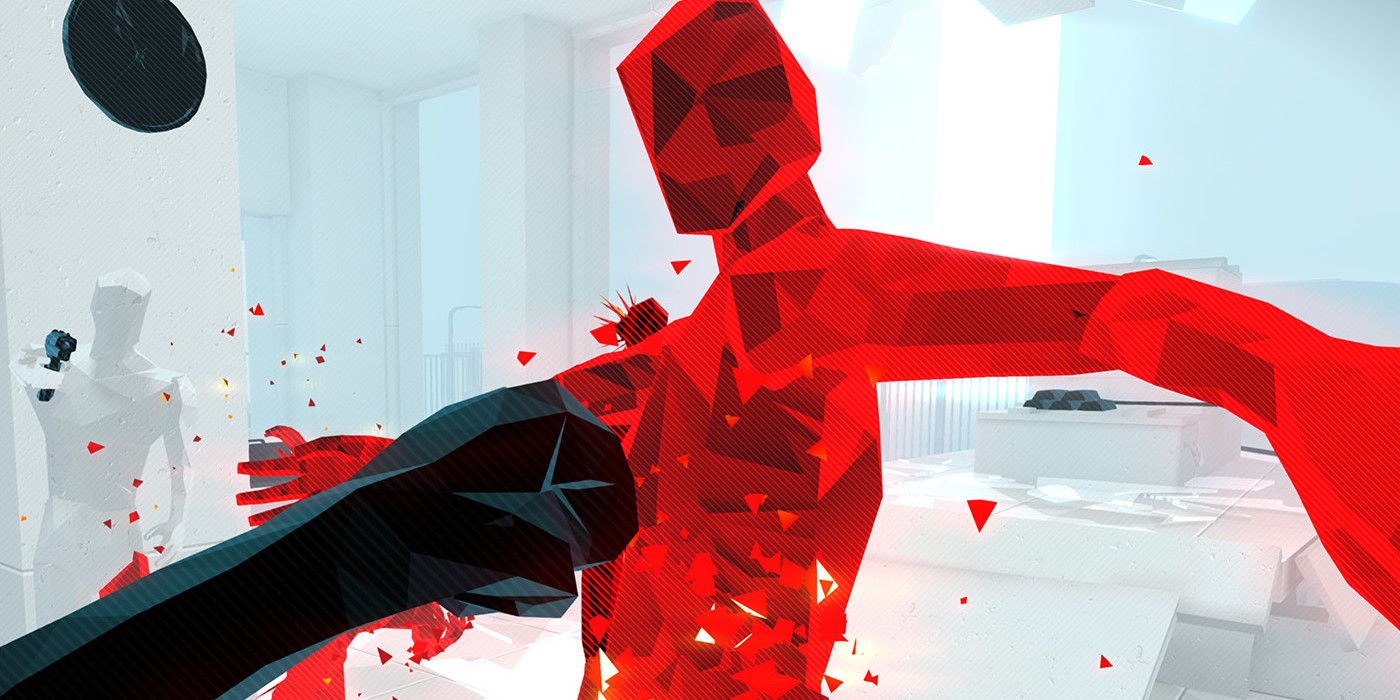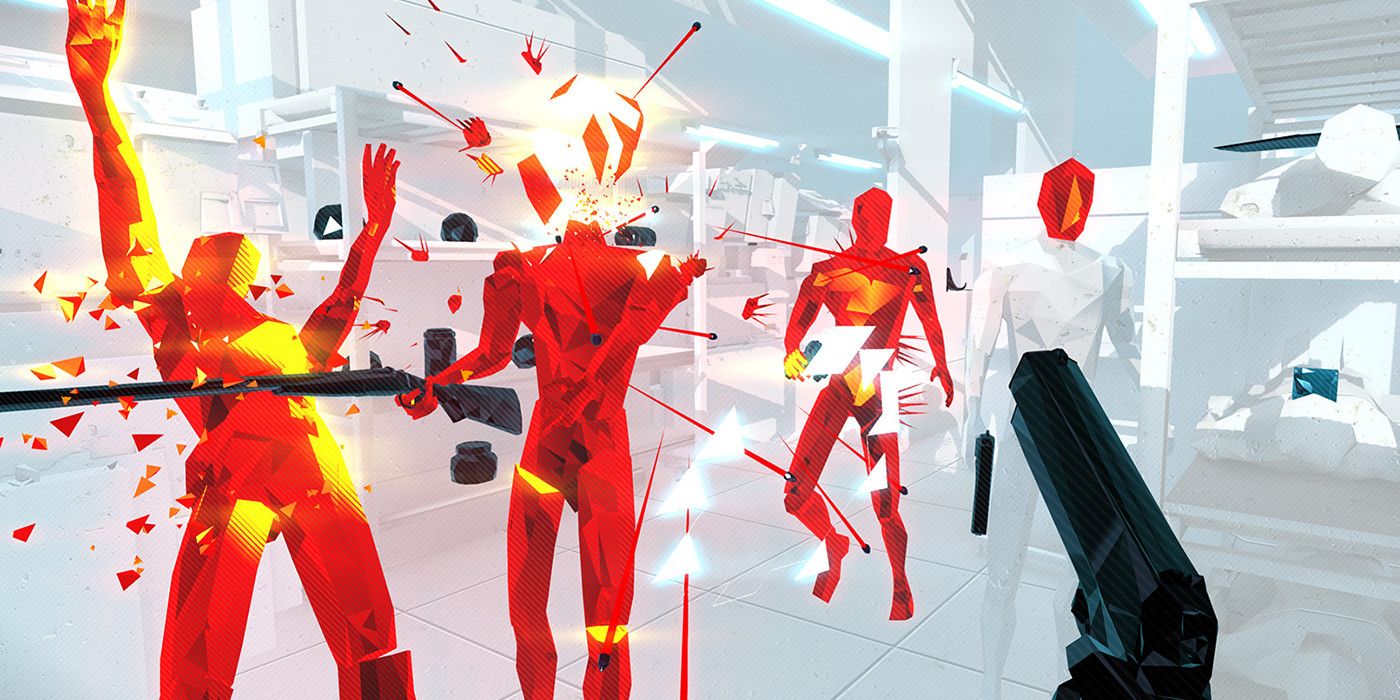FPS games can sometimes feel like repeats with the same old mechanics. Even when they do innovate, like in the case of Half Life 2's physics engine, those mechanics are often quickly adapted as standard for the franchise. Then there's 2017's Superhot, which follows the FPS formula -- but innovates the genre by making time move only when the player does.
Because time is directly linked to the player's movement in Superhot, strategy is key. The player literally has time on their side to think through every action they make. Instead of rushing into combat and having to rely on reflexes to dodge incoming attacks, players can carefully plan their movements around bullets or even try to use a melee weapon to block the bullets.
FPS games often try to speed up gameplay in order to convey a sense of action and urgency. Games like Doom Eternal go for prioritizing speed and reflex skills, which rewards quick thinking over long-term strategy. Superhot takes this mentality and turns the FPS genre on its head, which moves players to consider positioning and options.
When time is slowed to a crawl, players can plan their shots and don't need to resort to common FPS strategies, like leading shots or reflex shooting. Instead, players can balance just how fast they should let time move and whether or not moving to a new position is worth the amount of time it will give enemies to move and shoot.
The original Superhot innovated the FPS genre greatly, showing that shooters don't need to be as sterilized and standard as games like Call of Duty and Medal of Honor. It's possible to take a chance on a gimmick and change things up. Later titles like Doom 2016, Overwatch and even Call of Duty: Black Ops 3 seemingly jump on board, innovating the FPS genre by taking a chance on new mechanics or gimmicks.
The Superhot team created a VR version of the game in 2017 and formed the indie publishing studio Superhot Presents. In June, the studio released a sequel called Superhot: Mind Control Delete. The time stopping mechanic is back in full force, but Mind Control Delete doubles down on the strategy elements by providing new skills and abilities. The original Superhot had something similar with a challenge mode, which provided unique gameplay modifiers to provide a new challenge.
These new playstyle options push the sequel out of the FPS genre and into the strategy or even rogue-lite genre. It capitalizes on previous innovations, allowing the player to get even more out of the ability to move with the flow of time. For example, being able to body swap with enemies can lead to a quick escape from near death.
However, Mind Control Delete isn't the only FPS to push the genre. In a way, FPS games need to have a gimmick in order to stand out, like how Watch Dogs: Legion allows players to recruit any NPC to their team, then play the game as those NPCs. It seems unlikely the Superhot franchise will lose its edge, but the studio may need to push the envelope even further in the future to keep standing out.
Furthermore, Superhot: Mind Control Delete proves FPS games don't have to have stories to be compelling or fun. There is a story here, but it isn't prioritized over gameplay to the point that the title becomes more of a RPG. Superhot and its sequel are the most innovative shooters in years.




